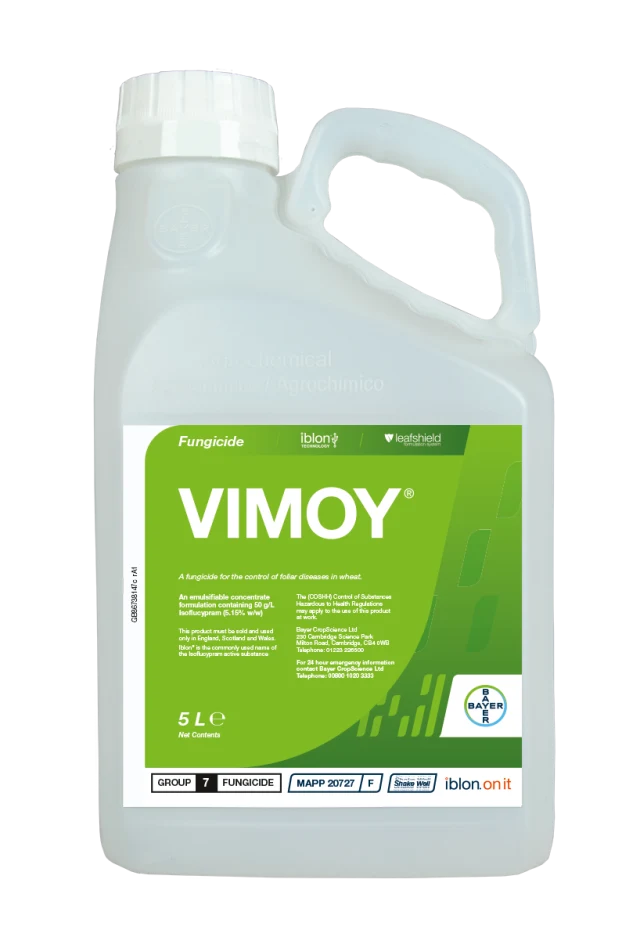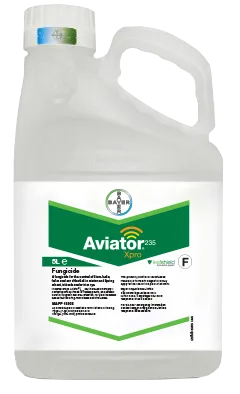Published on 29th April 2025
Local Insights
Disease control advice for cereals and potato growers in the west

Current situation (14 April 2025)
Only 3 mm of rain in March and very little up until the middle of April, left crops needing forecast rain. Where granular fertiliser was applied it hadn’t been taken up, but even so, crops are generally looking a bit better than a couple of months ago.
Disease levels in wheat are relatively low, but there is as usual some Septoria on the lower leaves. I haven’t seen any brown rust yet, although that doesn’t surprise me. I have only seen yellow rust in Zyatt, but there are reports of it in varieties like Champion and Dawsum, which are two varieties that shouldn’t get it too much. That probably means you have to ignore yellow rust resistance ratings this season, in case there is a new race.
1) Timing advice for T1 sprays
With a lot of later drilling in the west, there will be crops that weren’t at the correct growth stage to apply T1s in April and will still need spraying. There’s also been a lot of talk about reducing rates at T1 in view of the lower level of disease, although if the forecast rain arrived, that might have changed.
Take care when assessing growth stages around T1 – be wary of plants “dropping” a leaf because later sown crops will catch up to some extent – it might not be quite as late as you think it will be.
Ideally, you’re targeting final leaf three emergence, but in later drilled crops it might be the right thing to apply even if crops are not quite at that stage, with flag leaf sprays due maybe only two weeks later.
Thinner crops might also respond more to a T1, as there could be more yield contribution from the lower leaves because more light penetrates the canopy. That could suggest cutting inputs at earlier timings might not be the right thing to do if leaf three and possibly leaf four are contributing more to yield than a thicker crop.
Later drilled crops are more prone to yellow rust, according to researchers, which is something you don’t want to let get out of hand, as it becomes more difficult to control. Both Ascra® Xpro® and Plaxium® should do a good job at T1 and will also help where mildew is another potential concern. Using a fungicide at T1 with mildew activity is useful, as specific mildewicides tend to be expensive.
2) Don’t just base fungicide inputs on yield potential
As with T1 sprays, timing for flag leaf fungicides is important. The leaf should be fully emerged, as any of leaf that hasn’t emerged will be unprotected as fungicides only move towards the leaf tip and not towards the base of the leaf. If you see brown rust or any other disease at the base of the flag leaf, it’s likely it wasn’t emerged when it was sprayed.
Keep intervals to no longer than three weeks from when the T1 spray was applied. If it’s much longer you may need to consider a T1.5, although that’s less likely to be required this season. And don’t try to combine flag and ear sprays – you just compromise timings of both.
It’s also natural to try to base fungicide inputs on perceived yield potential, but it really should be on disease pressure and varietal susceptibility.
Generally early sown varieties with moderate susceptibility to Septoria will need flag leaf fungicides with good Septoria activity, but exactly what will depend on what was used at T1. If you’ve used any isoflucypram containing product (such as Vimoy® or Plaxium®), or fenpicoxamid (as in Univoq®) or pydiflumetofen (Miravis® Plus), then that will preclude you from using the same active again as they can only be applied once to wheat crops in a season.
Remember that while both Univoq® and Miravis Plus® are excellent Septoria products, they’re pretty average against rust, especially brown rust and might need an additional rust-active product, adding to cost. In that situation, if you haven’t used Plaxium® or Vimoy® at T1, there’s a really good opportunity to use them at T2.
In later sown and more disease resistant varieties, there’s also potentially a place for Ascra® Xpro® at T2, where Septoria pressure is lower.
3) Mixes of actives needed for winter barley T2 sprays
With the shift in sensitivity of some pathogens, especially net blotch, avoid using single actives in favour of combinations of actives in a product.
In products such as Ascra® Xpro® or Siltra® Xpro® the mixing is done for you, and either will make a decent choice for awns emerging sprays, covering all the main foliar diseases with the combination of azole and SDHI chemistry.
4) Don’t start spring barley disease programmes too late
Spring barley crops have emerged well considering it has been so dry. My key thing for spring barley is don’t leave it too late to start disease control. If you wait until GS31, it’s too late to keep on top of diseases and avoiding having to try to control them curatively, which isn’t that easy.
Ideally the first spray in a two-spray programme should be at the end of tillering, which will help maintain tiller numbers. Using a co-formulated product is a good idea, to avoid adding even more complications to likely big tank mixes with herbicides, growth regulators and maybe nutrition.
Ascra® Xpro® is the stronger product for disease control, but Siltra® Xpro® still has a place. As you can only use Ascra® Xpro® once in a barley programme, I’d apply it at T2 in spring barley where Ramularia is likely to be more of an issue. It could also be worth adding folpet at that timing to boost Ramularia control.
5) Keep oilseed rape crops green
The data from the Yield Enhancement Network (YEN) shows that growing oilseed rape is a bit like wheat in that the last bit of yield and oil content comes from keeping the crop green for as long as possible.
That’s why using an SDHI, such as Aviator® Xpro®, as a flowering spray to protect against Sclerotinia provides an added benefit with the physiological responses boosting greening.
Flowering sprays typically provide protection against Sclerotinia for around three weeks, so if the crop is still flowering after that protection has worn out, then a second application of 0.5 L/ha of Aviator® Xpro® might be worth considering.
6) Plan blight programmes
Alternating modes of action and products in blight programmes is key after the first two instances of EU_46 were found in the UK at the end of last season. This strain in Europe has been found to be resistant to the OSBPI product Zorvec® and caused a lot of control problems in northern Europe, along with the related EU_43 strain, especially where alternation and mixing were not being utilised.
Within this picture, Infinito® plays an important role. Containing two actives in propamocarb and fluopicolide which are not affected by the mutations in EU_43 or EU_46, it has a place across the programme. Historically, it’s been used more at the end of the season where its strength in preventing tuber blight is important, and that’s still the case, but consider also using earlier on to help with resistance management as well as efficacy.
-----
Aviator® Xpro® contains bixafen and prothioconazole. Ascra® Xpro® contains bixafen, fluopyram and prothioconazole. Infinito® contains fluopicolide and propamocarb. Miravis® Plus contains pydiflumetofen. Plaxium® contains isoflucypram, fluopyram and prothioconazole. Siltra® Xpro® contains bixafen and prothioconazole. UnivoqTM contains fenpicoxamid and prothioconazole. Vimoy® contains isoflucypram. Zorvec® contains oxathiapiprolin.
Aviator®, Ascra®, Infinito®, Plaxium®, Siltra®, Vimoy® and Xpro® are registered Trademarks of Bayer. All other brand names used are Trademarks of other manufacturers in which proprietary rights may exist. Use plant protection products safely. Always read the label and product information before use. Pay attention to the risk indications and follow the safety precautions on the label. For further information, including contact details, visit www.cropscience.bayer.co.uk or call 0808 1969522. © Bayer CropScience Limited 2025







